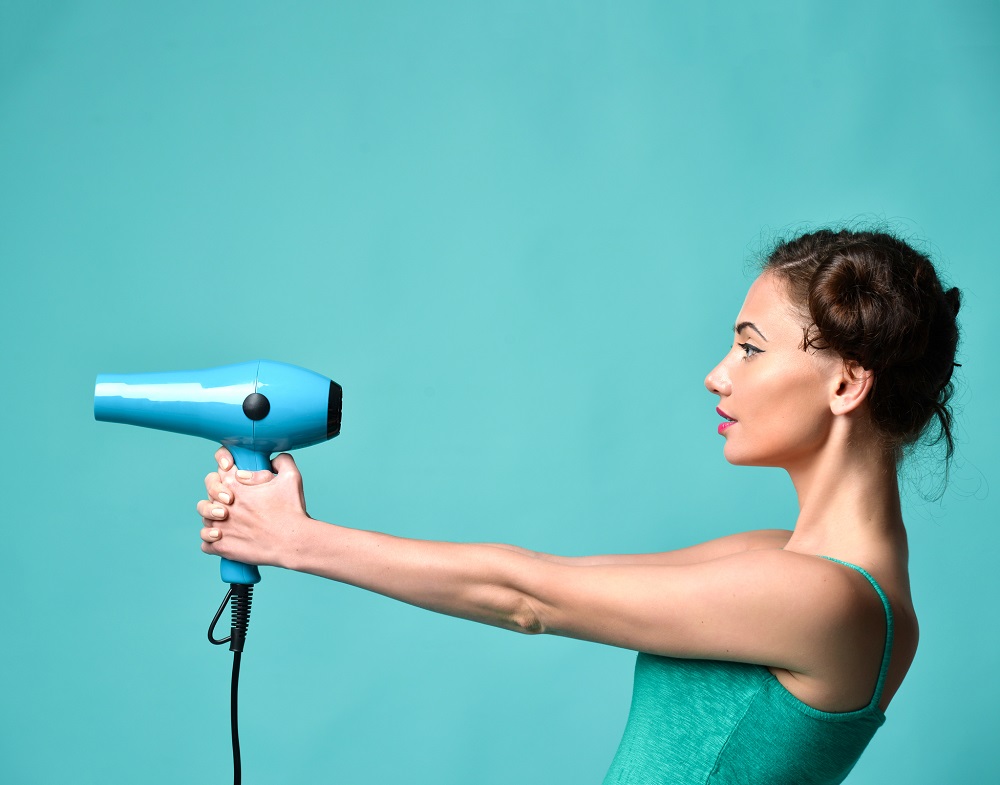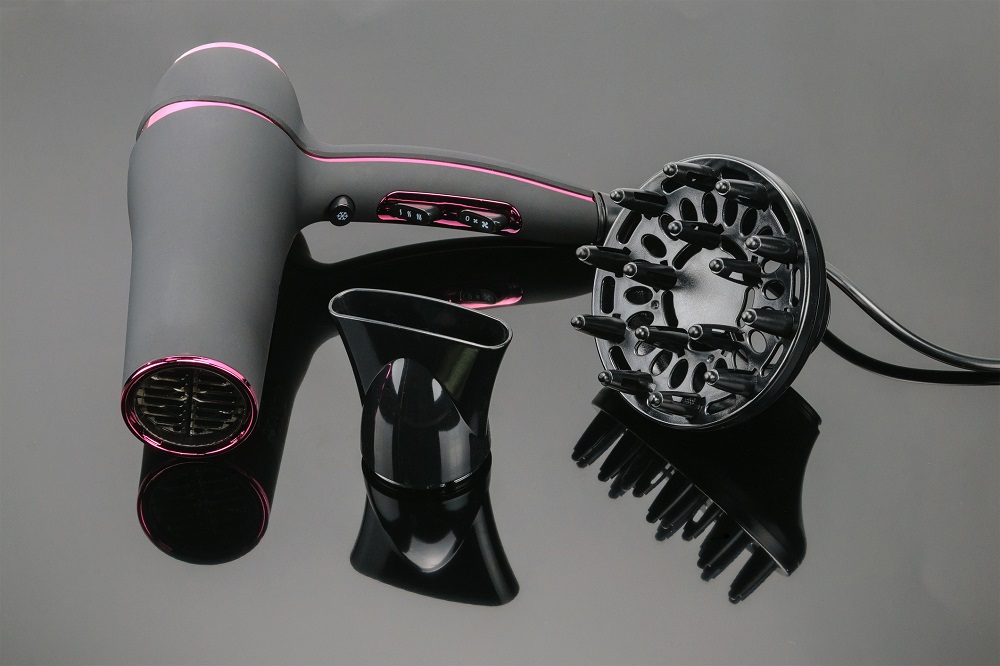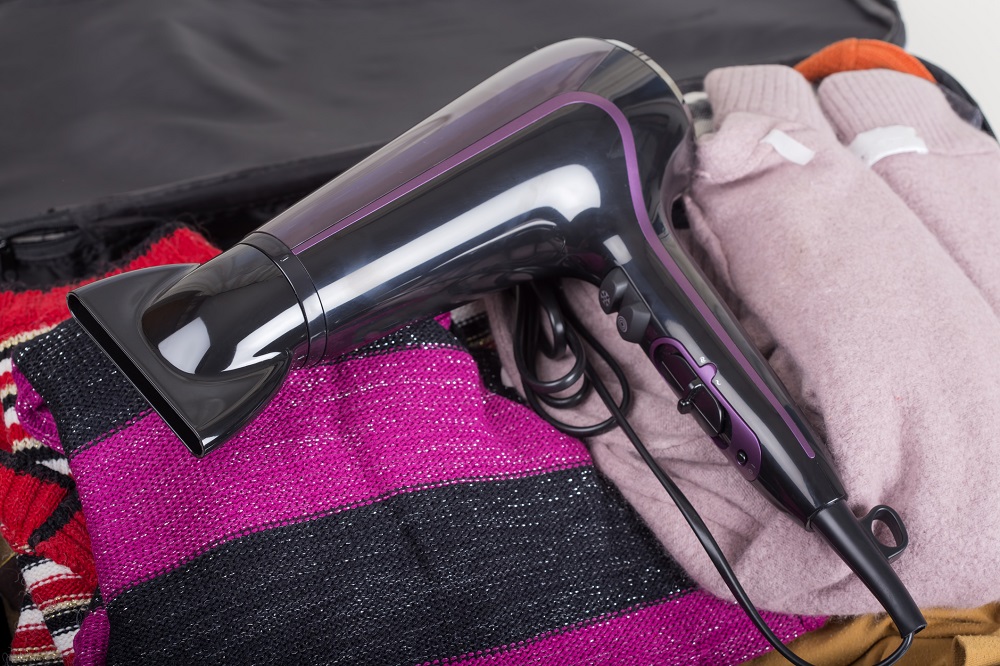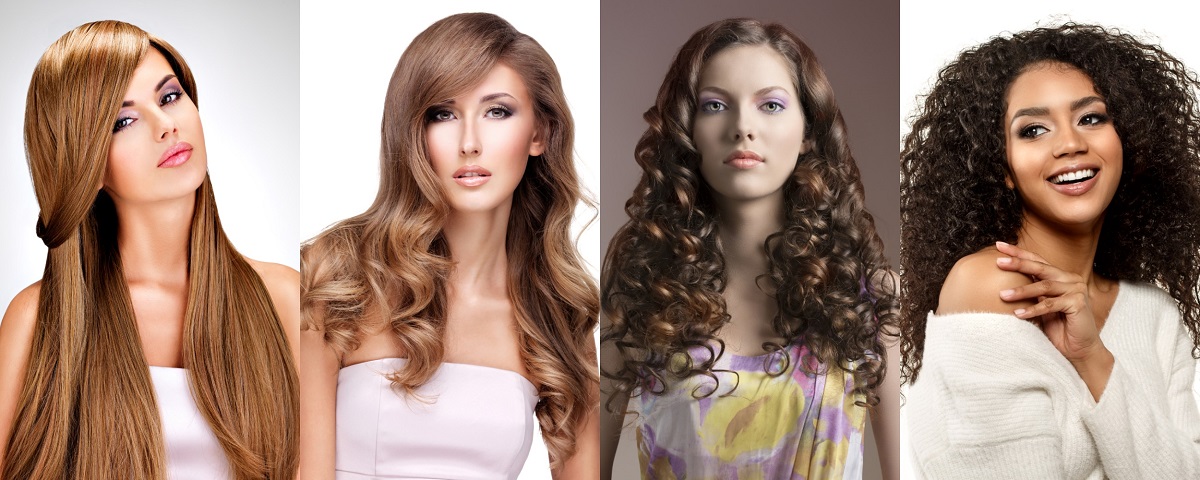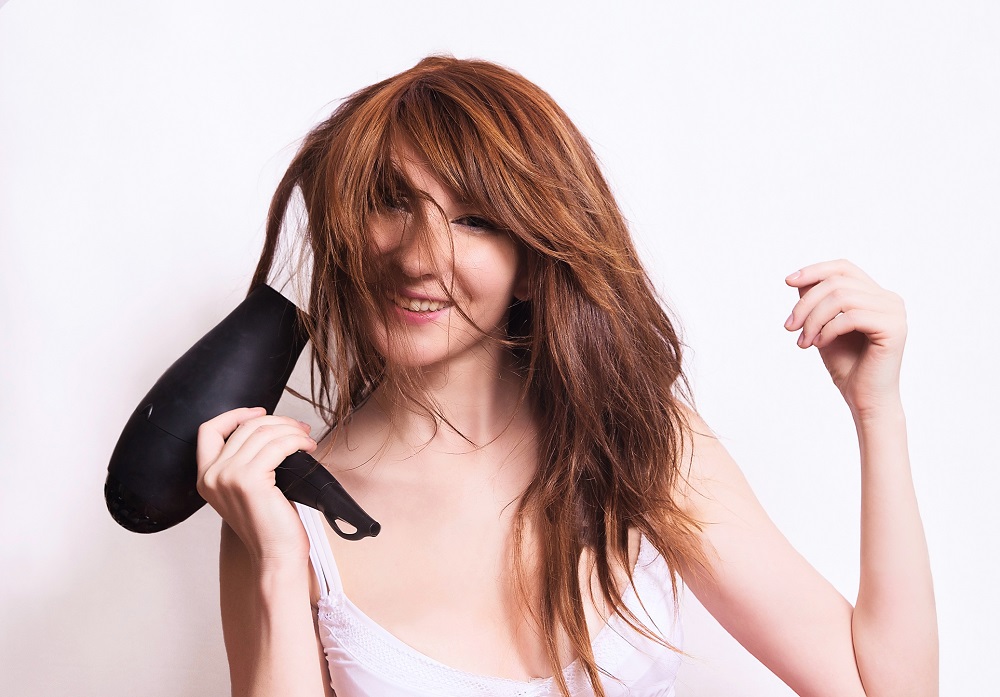So you want to buy a new hair dryer. Sounds easy enough, right? Think again.
A few minutes of cursory searching will reveal to you the dizzying truth that there are nearly as many different kinds of hair dryers out there as there are people to use them.
Each one seems to have its own set of specs, features, and applications. So how in the world do you find the one that’s right for you?
Don’t get your follicles in a bunch — choosing the perfect hair dryer doesn’t have to be as much of a chore as it might appear to be.
The key to narrowing down your multiplicity of options without turning product research into a full-time job is to get to know your own hair’s unique character and needs and have a good idea of how exactly you’ll be using your new appliance.
What Should I Look for in a Hair Dryer?
Hair dryers are designed, first and foremost, to dry hair (duh). They accomplish this by generating a concentrated stream of heated air that the user sweeps back and forth over the length of their wet hair.
This combination of heat and airflow is a potent one, encouraging rapid evaporation of the moisture in the strands and helping to dry them much faster than they could when allowed to air dry naturally.
But that’s only half the picture. Hair dryers are also versatile styling tools that can add volume and bounce, create shape, and help pull off complicated ‘dos. As such, a good hair dryer needs to do more than just perform a single basic function.
With this in mind, let’s take a look at a few of the key components you should be on the lookout for when sizing up a particular appliance.
Power
When applied to hair dryers, the term “power” simply means how hard a given model is capable of blowing and how hot it can safely get.
If your primary concern is getting your damp hair dried as quickly as possible, it’s a good idea to go with a unit with a minimum power rating of 1,500 watts, which will provide a stronger air stream and a higher temperature threshold.
Anything less will fail to provide adequate force or heat, extending your overall drying time. The power principle is also important if you frequently make use of styling attachments.
If your dryer only puts out a measly 800w of airflow, a concentrator or diffuser may not do you much good. This is why the kind of hair dryers you find in salons run like handheld leaf blowers.
Fortunately for you, most hair dryers made for home use offer a standard wattage of around 1,200-1,500, so you won’t have to search too hard to track down one with a satisfactory power rating.
Some professional-grade dryers even go up to 3,500w (if you need help conceiving of that kind of output, just picture a Shar Pei riding in a car with its head hanging out the window).
Keep in mind that as power increases, so does price— the reverse is also true. Lower wattage hair dryers don’t generally present many advantages, aside from greater affordability and reduced energy consumption. That said, both of those things are important considerations for many users.
In the end, the amount of power you choose to wield should be determined by your own individual priorities.
Attachments
These days, it’s not uncommon for hair dryers to come with an assortment of attachments to accommodate various needs and styling techniques. For instance, a high-end dryer may be packaged with a quick-dry nozzle, a diffuser, a detangling comb, and a specially-shaped concentrator for precise, targeted drying, just to name a few.
Such attachments aren’t a strict necessity— some users may want to dry their hair and be on their way, while others may rely on alternative tools and appliances to do the bulk of their styling after their hair is dry.
If you think you can get by without them, opting for a solid, no-frills dryer that eschews accessories can be a good way to save yourself a few dollars.
Assuming that your average post-shower routine involves both drying and styling, however, these sorts of accessories may be well worth the higher sticker price. And if you’ve never used them before, you could find a whole new world of hairstyle possibilities opened up to you.
A hair dryer with a concentrator, for instance, in concert with a simple brush or comb, makes it possible to dry and straighten your bangs in one easy process.
Similarly, a detachable detangler could save you the trouble of having to brush your hair once it’s dry. For many users, that convenience is worth paying a little extra for.
Additional Features
Along with attachments, the hair dryers on the market today exhibit a diverse range of other features and amenities that could have an impact on your overall drying experience.
One often overlooked element is the length and design of the power cord. Cord length is an afterthought for many users (if they think of it at all), but it can make a big difference if your bathroom has an atypical layout, or if you have a tendency to be especially mobile or animated while drying your hair (this means you, karaoke superstars).
To prevent aggravating unplugs and give yourself more room to do your thing, it’s advisable to look for an appliance with a cord that’s at least six feet long. There are also hair dryers with power cords reaching up to 12 feet in length for maximum maneuverability.
Another feature you might find useful if you like to style as you dry is the “cool shot” button, which sends out a gust of cool air when pressed.
Hair sets and begins to hold its shape as it cools, so the addition of a cool shot button could make it easier to put the finishing touches on a style one section at a time without forcing you to stop and adjust your heat setting.
Portability
Once you’ve figured out what you need in terms of accessories and performance, the next thing you’ll want to think about is where you plan on using your hair dryer.
An ordinary hair dryer might be right at home on your bathroom counter, but most are just too bulky to fit comfortably in a suitcase or overnight bag.
Enter the travel hair dryer.
Travel dryers are down-scaled versions of their home counterparts, with streamlined designs and less obtrusive attachments and accessories. Some even incorporate additional space-saving measures like fold-up handles.
These sorts of modifications make them a cinch to slip into your luggage. And don’t think that travel dryers are any less efficient just because they’re smaller. There are plenty of models on the market with power ratings of 1,500 or higher.
The bottom line is that if you’re the kind of person who’s always on the go and you want to look put-together no matter where life takes you, a separate, reliable travel hair dryer is a must.
You may even be able to do without a full-sized hair dryer entirely if you take a more minimalistic approach to styling.
A quick note on travel hair dryers: if you live in the U.S. and expect to be going out of the country at any point, you’ll need to either pick out a dual-voltage appliance operable at either 120 or 240 volts or invest in a separate adapter. Otherwise, your dryer may not work in international outlets.
Understanding Different Hair Types
As if it weren’t difficult enough to select a hair dryer based on their many bells and whistles alone, there’s also your specific hair type to consider.
All hair can be sorted into roughly four different categories: straight, wavy, curly, and kinky (or coily). These categories refer to the hair’s general look—that is, the shape of the individual strands, their thickness and texture, and the way they lay together.
If you’re not sure what type of hair you have, run to the nearest mirror and take a close look at your locks. Do they fall in smooth, straight sheets or do they have some wave to them? If they’re wavy, are those waves pronounced enough to be classified as curls? If so, are they loose and flowing or tightly-coiled like springs?
It can also help to take a look at photos or illustrations depicting the four hair types and identify the one that most closely resembles your own coiff. You’ll find many such visual aids online.
The Link Between Hair Dryers and Hair Types
Every head of hair is different, so it only stands to reason not all hair dryers will work equally well for all users.
Before you can come up with a solid answer to the question “What’s the best hair dryer for me,” it’s necessary to know a little bit about the different technologies commonly used in today’s hair dryers.
Tourmaline/Ionic Hair Dryers
Tourmaline and ionic hair dryers both work by bombarding wet hair with negatively charged ions that counteract and break down positively charged water molecules without overdrying.
The result is double-quick drying and smoother, more hydrated hair. Tourmaline and ionic dryers are highly recommended for people with dry, curly or kinky hair that’s prone to flights of frizz.
Ceramic Hair Dryers
The inside of a ceramic hair dryer is lined with (surprise) ceramic, a material hailed for its ability to conduct and distribute heat evenly. As such, they dry hair in a hurry while also minimizing heat-related damage.
Ceramic hair dryers are excellent all-rounders, but work especially well on straight, flat, or limp hair in need of a lift.
Titanium Hair Dryers
Like ceramic, titanium also warms up fast and heats evenly. Titanium gets a lot hotter than ceramic does, though, thus potentially reducing drying times for users with especially thick or curly hair. For the same reason, they’re not the best choice for locks that are already dry or damaged.
Let’s say for example that your hair is fine, curly, and naturally dry. Since high temperatures tend to cause fine and textured hair to explode into an uncontrollable wilderness of frizz, your best bet would be to select a tourmaline or ionic dryer that has multiple heat settings and includes a diffuser attachment to preserve the shape of your curls as they dry.
If, on the other hand, your hair is bone-straight and falls on either extreme of the thickness spectrum, you might prefer the speedy drying capacity and volumizing effect of a high-wattage ceramic or titanium dryer. See how easy this is?
Be aware that any hair dryers can cause heat damage if run too hot, held too close, or used too long. No matter what kind of dryer you ultimately end up settling on, it’s essential to make sure that it has adjustable heat settings.
Two settings (warm and hot) are good; three (low, medium, and high) are better. Throw in a cool shot button and you’re bound to inherit the title of undisputed blow dry grandmaster.
Conclusion
A task as seemingly straightforward as choosing a new hair dryer can become a real headache in no time if you make the mistake of going in blind. But with knowledge on your side, it’s possible to dispel the fog of commercial confusion and clear a path to a product you can put your full confidence in.
As long as you set out from the starting point of your individual needs and don’t mind doing a little homework along the way, you’re practically guaranteed to wind up with a hair dryer that checks all the right boxes.
The reward for your diligence will be double: a head full of sleek, strong, healthy hair and the satisfaction of working with a styling aid that feels like it was made just for you. You can go ahead and file that under “win-win.”

